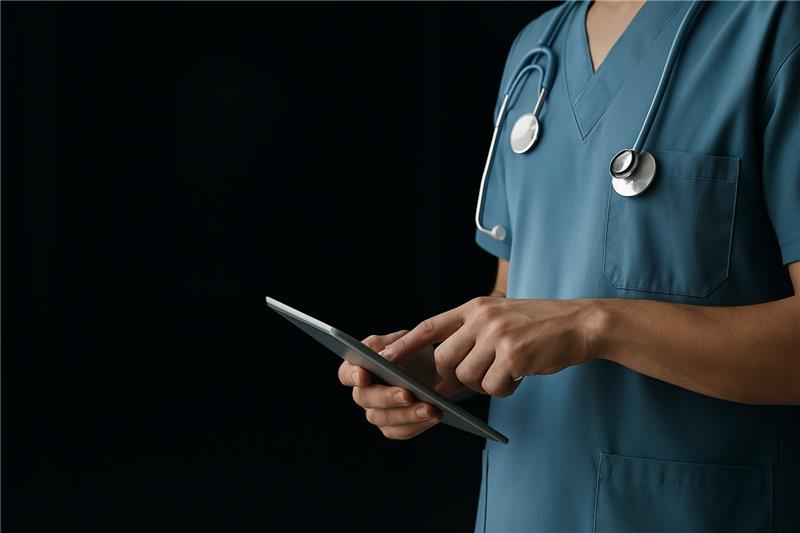
Patient Monitoring Devices: Advancing Real-Time Healthcare with Intelligent Technology
Patient Monitoring Devices: A Comprehensive Overview?
Patient monitoring devices are essential tools in modern healthcare, enabling continuous observation of physiological parameters to ensure timely medical interventions. These devices have evolved significantly, incorporating advanced technologies to enhance patient care across various medical settings.?
Understanding Patient Monitoring
Patient monitoring involves the systematic observation of physiological functions over time. This process can be continuous or intermittent, depending on the patient's condition and the clinical setting. The primary goal is to detect any deviations from normal parameters promptly, facilitating immediate medical response.?
Classification by Monitored Parameters
Patient monitoring devices are categorized based on the specific physiological parameters they assess:
- Cardiac Monitoring
Cardiac monitoring focuses on evaluating heart activity to detect arrhythmias, ischemia, or other cardiac conditions. Common methods include electrocardiography (ECG), which records the heart's electrical activity, and Holter monitors for ambulatory patients requiring extended observation.?
- Hemodynamic Monitoring
This type monitors blood pressure and blood flow within the circulatory system. Measurements can be invasive, using catheters and transducers, or non-invasive, employing cuffs and oscillometric devices.?
- Respiratory Monitoring
Respiratory monitoring assesses breathing patterns and gas exchange. Techniques include pulse oximetry, which measures blood oxygen saturation (SpO2), and capnography, which evaluates end-tidal carbon dioxide (EtCO2) levels, providing insights into ventilation efficiency.?
- Neurological Monitoring
Neurological monitoring evaluates brain activity and function. Electroencephalography (EEG) records electrical activity in the brain, aiding in diagnosing seizures and other neurological disorders.?
- Metabolic Monitoring
Metabolic monitoring involves tracking parameters like blood glucose levels, lactate, and electrolytes. Devices such as glucometers and blood gas analyzers are commonly used in this category.?
Components of Patient Monitoring Systems
A comprehensive patient monitoring system comprises several integral components:?
- Sensors
Sensors detect specific physiological signals. Examples include ECG electrodes for cardiac activity, pulse oximeter probes for oxygen saturation, and thermistors for temperature measurement.?
- Signal Processing Units
These units amplify and convert the raw signals from sensors into readable data. They filter out noise and ensure accurate representation of physiological parameters.?
- Display Monitors
Monitors present the processed data in real-time, allowing healthcare providers to observe trends and make informed decisions. Displays often include waveforms, numerical values, and alarm indicators.?
- Alarm Systems
Alarm systems alert clinicians to parameter deviations beyond set thresholds. They are crucial for prompt intervention in critical situations.?
- Data Storage and Connectivity
Modern devices store patient data for trend analysis and integrate with electronic health records (EHRs). Connectivity features enable remote monitoring and telemedicine applications.?
Mobile and Remote Monitoring
Advancements in technology have led to the development of portable and remote monitoring devices:?
- Wearable Devices
Wearables, such as smartwatches and patches, continuously monitor parameters like heart rate, activity levels, and sleep patterns. They are increasingly used for chronic disease management and wellness tracking.?
- Telemetry Systems
Telemetry allows for the wireless transmission of patient data to centralized monitoring stations. This is particularly useful in hospital settings, enabling centralized observation of multiple patients.?
- Home Monitoring
Home monitoring devices empower patients to manage their health conditions outside clinical settings. Examples include blood pressure monitors, glucometers, and pulse oximeters designed for personal use.?
Interpretation of Monitored Data
Accurate interpretation of monitoring data is vital for effective patient care:?
- Trend Analysis
Observing trends over time helps in identifying gradual changes in a patient's condition, facilitating early intervention.?
- Delta Checks
Delta checks involve comparing current readings with previous values to detect significant changes, ensuring data accuracy and patient safety.?
- Clinical Decision Support
Integrating monitoring data with clinical decision support systems enhances diagnostic accuracy and treatment planning.?
Emerging Technologies in Patient Monitoring
The field of patient monitoring is continually evolving, with innovations aimed at improving accuracy and patient outcomes:?
- Artificial Intelligence (AI) and Machine Learning
AI algorithms analyze vast amounts of monitoring data to predict patient deterioration, enabling proactive interventions.?
- Integration with EHRs
Seamless integration of monitoring devices with EHRs ensures comprehensive patient records, enhancing continuity of care.?
- Miniaturization and Wearable Tech
Advancements in miniaturization have led to the development of discreet, comfortable wearable monitors, increasing patient compliance.?
Challenges and Considerations
Despite technological advancements, several challenges persist:?
- Data Privacy and Security
Ensuring the confidentiality and integrity of patient data is paramount, necessitating robust cybersecurity measures.?
- Interoperability
The integration of diverse monitoring devices with existing healthcare IT systems requires standardized protocols and compatibility.?
- User Training
Effective utilization of monitoring devices depends on adequate training for healthcare providers and patients.?
Market Outlook
As per the report published by MarketsandMarkets, The global patient monitoring devices market, valued at US$45.7 billion in 2022, is forecasted to grow at a robust CAGR of 8.0%, reaching US$48.5 billion in 2024 and an impressive US$71.1 billion by 2029.
80% of the Forbes Global 2000 B2B companies rely on MarketsandMarkets to identify growth opportunities in emerging technologies and use cases that will have a positive revenue impact.
- Leading Automated Guided Vehicle Companies 2024: An In-depth Analysis
- CHARGED UP: SHIFT TO E-MOBILITY AND THE EVOLUTION OF TRANSPORTATION
- Global Automotive Market: Predictions For 2024
- Revolutionizing Depot Charging: Hockey Stick Growth on the Cards
- The Future of Silicon Battery Industry: Innovations and Market Outlook


